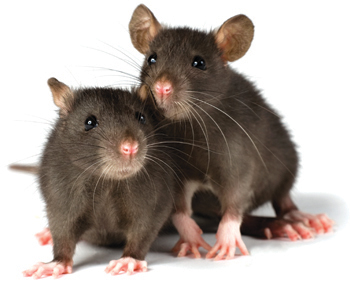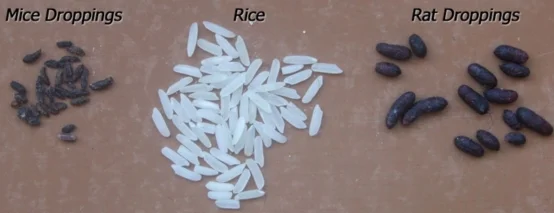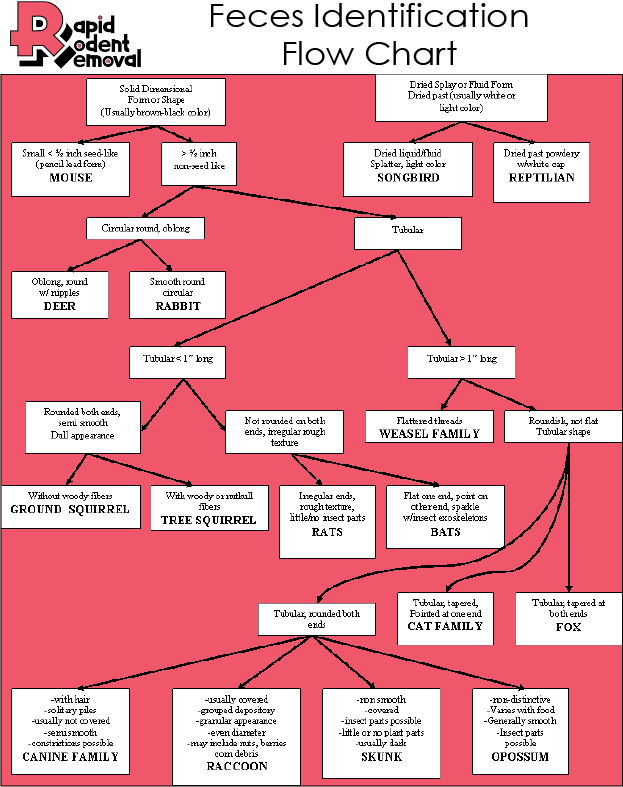RAT POOP
What Does rat poop look like ?
How to identify Rat Poop, Rat Feces, Rat Droppings (Pictures and Descriptions)
Rat Droppings
How to Identify Rat Poop ?
We at rapid Rodent Removal want you to know It’s not hard to identify the rodent’s poop when your property suffers from a rat infestation (signs of rats) - you may notice tiny dark pellets of poop scattered everywhere. But, how do you know if these feces belong to a rats and not a mouse? There’s a simple way to identify them.
Best bait to use on mouse traps
How to catch a rat
Best rat bait
How big is rat poop ?
Rat Poop (3/8 inch) are found in large groupings. They are about the size and shape of an olive and can often be found near insulations.
Mouse Poop (3/16 inch) on the other hand, are much smaller than an olive. They are elongated and with a sharp end
Best size description : If its small like rice its mice, if its kinda fat its from a rat
what does rat poop look like ?
what does squirrel poop look like ?
what does raccoon poop look like ?
what does opossum poop look like ?
RAT POOP PICTURES
What Does rat Poop Look like ? we got pictures !
Squirrel droppings closely resemble rat feces. Both pests’ poop is dark brown and smooth, but squirrels leave larger, barrel-shaped pellets behind while rats produce small, oblong-shaped droppings with tapered ends. Squirrel feces often appear under trees, around bird feeders, and inside crawl spaces in homes or businesses.
This is an incredibly important point because you have to know the difference between squirrel feces and rat feces. Squirrels tend to be much more active during the day, so this is one point to take into consideration. In terms of color, squirrel feces tend to be light brown or red and oblong-shaped droppings. Rat droppings however tend to be much darker, being more brown or even black. The diet of these two animals is very different, so look at the shape or the size of the feces too. Squirrel feces are much thicker in the middle and they have rounded edges. Rats on the other hand are much narrower and have a pointed end.
Rat poop vs Squirrel poop
Squirrel droppings and rat droppings can have different characteristics in terms of size, shape, color, and smell.
Size: Squirrel droppings are typically slightly larger than rat droppings. Squirrel droppings can measure up to 0.5 inches in length, while rat droppings are usually less than 0.25 inches in length.
Shape: Squirrel droppings have a more oblong shape, while rat droppings are more uniform in shape, typically cylindrical.
Color: Squirrel droppings are dark brown to black in color, while rat droppings are dark brown to black in color as well.
Smell: Squirrel droppings have a mild, earthy smell, while rat droppings have a strong, musty odor.
Content: Squirrel droppings may contain undigested bits of food, such as seeds, while rat droppings are usually smooth and uniform.
It's worth noting that it can be difficult to tell the difference between squirrel and rat droppings just by looking at them, and it's always best to consult with a professional to be certain.
rat poop vs Squirrel poop vs mouse poop
rat poop vs mouse poop
Mouse Poop vs rat poop
The difference between Mice vs Rats can be easily told in there poop while both mice and rats are rodents, there are some differences in their feces that can help distinguish one from the other. Here are a few key points to help you tell the difference between mouse and rat droppings:
Size: Mouse droppings are generally smaller, measuring about 1/8 to 1/4 inch (3-6 mm) in length, whereas rat droppings are larger, ranging from 1/2 to 3/4 inch (12-18 mm) in length.
Shape: Mouse droppings are usually spindle-shaped with pointed ends, while rat droppings tend to be more rectangular or capsule-shaped with rounded or blunt ends.
Consistency: Mouse droppings may be slightly softer than rat droppings, but both will harden over time. Fresh droppings are usually dark and moist, while older droppings become dry and crumbly.
Distribution: Mouse droppings are often scattered randomly, while rat droppings tend to be more concentrated in specific areas, such as near nesting or feeding sites.
By observing these characteristics in rodent droppings, you can more easily distinguish between mice and rats.
rat poop
What Does rat poop look like ? Pictures and Descriptions of Rat Poop, Rat Feces, Rat Droppings !
How to Safely Clean Rat Droppings?
Open the doors and windows. Ventilate the room for at least 30 minutes before you begin cleaning.
Wear protective gear. Use rubber gloves, so you don't touch the waste directly; a face mask, so you don't inhale the dust (as we said, diseases can be transmitted by inhaling polluted dust); even consider wearing protective goggles, so contaminated dust doesn’t get into your eyes.
Spray with a 10% chlorine bleach solution. Mix 360 millilitres of chlorine bleach with 5 litres of hot water and spray the droppings with the solution. Don't sweep or vacuum, as this will release pathogens into the air and/or trap said pathogens on your broom or in your vacuum cleaner.
Pick up the droppings with a paper towel. Then, place them in a plastic bag with a sealer. Put the paper towel in a plastic bag with a sealer, as well. Dispose of the plastic bags outside of your home.
Wipe all floors and surfaces with disinfectant. Use the same solution of 10% chlorine bleach. Use a paper towel to dry.
Wash your hands. Use hot water and a disinfectant to clean your hands. Don't forget to scrub under your nails and around your wrists
Seal Up Entry Points including all Cracks and Holes gaps in Doors and Windows and maintain Proper Food Storage, feed your pets inside, then set traps
FREQUENTLY ASKED QUESTIONS ABOUT rAT POOP, rAT DROPPINGS OR rAT FECES
How can I tell if the rat droppings are old or new?
To determine whether rat droppings are old or new, you can look at their color and texture.Fresh rat droppings are typically dark brown and moist, while older droppings can become dry and brittle, and may appear lighter in color.
You can also try pressing on the droppings with a tool or your finger. If they are soft and pliable, they are likely fresh. If they crumble or break apart easily, they are probably old.
It's important to note that rat droppings can carry disease, so it's recommended to wear gloves and a mask when handling them, and to thoroughly disinfect the area afterwards.
What should I do if I find rat poop in my kitchen or pantry?
Take preventative measures: To prevent future infestations, make sure to store food in airtight containers, keep your kitchen and pantry clean and free of debris, and regularly inspect for signs of rat activity.How long does it take for a professional exterminator to eliminate a rat infestation?
Sometimes it can be fixed overnight with mice trapping, but it generally takes 2-6 weeks
RAT POOP
Discovering rat poop in your home can be both distressing and potentially dangerous. But now you know what to do if you find rat poop: identify the droppings, clean and disinfect the area, and take steps to prevent future infestations. Don't hesitate to call in a professional exterminator if the problem becomes too big to handle on your own. Remember, a rat-free home is a healthy and happy home.







